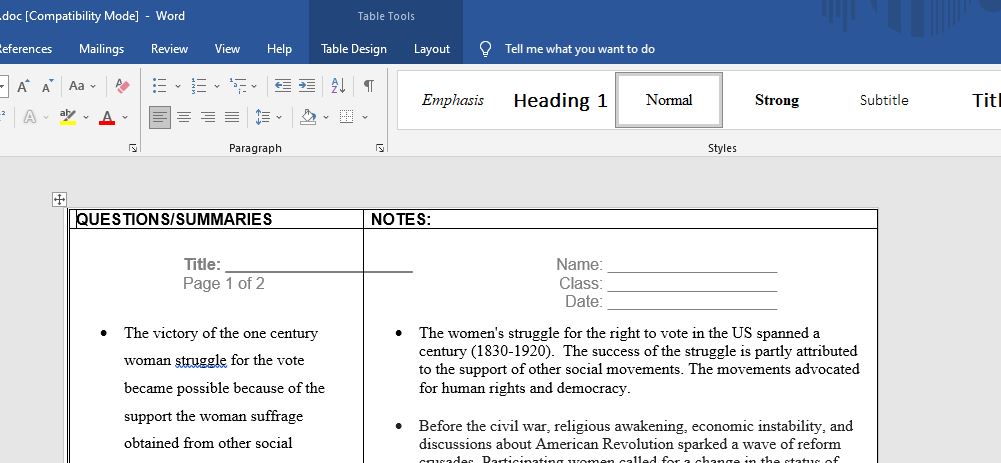History Tool Kit
This week we are are learning about the struggle for women to obtain the right to vote. The movement for women’s suffrage is steeped in the early 19th century, nonetheless women were not granted the right to vote until 1920 with the passage of the 19th amendment. The 100 year anniversary of the passage of the 19th Amendment was one of the few bright spots of 2020. Yet, even the history for women’s votes was not without controversy. Please watch lecture #5 and listen to lecture #6 for this week. If you hit the “closed caption option on lecture 5, you will be able to read along with the lecture. This can be helpful if you do not understand a particular comment.
Complete a Cornell note (yes that again) on the lecture by Ellen DuBois (Lecture 5).
The Professor and TAs have decided that you must have at least 9 significant passages with page citations/places in the video counter to get full credit. Please write these on the right hand side of the template. We will be deducting points for not meeting this requirement. Each significant passage must be in complete sentence form (between 1-3 sentences maximum per passage) and checked for spelling and grammar. Once you complete the reading and have identified your 9 or more significant moments in the lecture, you can now complete the left side column of your Cornell note. Here you will demonstrate your analytical skills by identifying at LEAST 3 major questions or themes out of the 9 significant parts of the lecture you have provided on the right side column of the Cornell note. These 3 or more major questions or themes must link to at least 3 of the significant passages you have provided. Please then write a 300 word summary MINIMUM for the DuBois lecture.
Want to do the advanced move and earn extra points, put DuBois (lecture 5) in dialogue with lecture 6 by Martha Jones. In no less than 300 words compare how points you noted in DuBois’s lecture agree with or are disrupted by points made by Martha Jones.
Requirements: 1
Lec6 https://newbooksnetwork.com/vanguard
Main reading https://www.nps.gov/articles/the-necessity-of-othe…
Answer preview:

word limit:780
